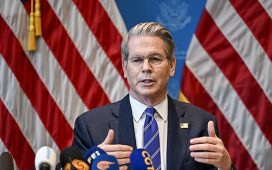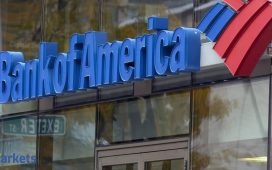gorodenkoff
For 2022, the hedge fund industry experienced the largest net asset outflow in six years as investors steered clear of active managers against a backdrop of exceptionally volatile and depreciating markets.
The capital flight of $55.4B was the largest since the $70.1B mark in 2016, according to a recent Hedge Fund Research report, which collected data between 1991-2022. Going back further, though, net outflows reached a record $154.5B in 2008, during the height of the Great Recession, before easing somewhat to $131.2B in 2009.
Net asset flows were notably positive in 2021 ($15.12B), a year when a raft of memes quipped “stocks only go up.” Indeed, the S&P 500 index (SP500) shot up 30% that year, only to be followed by 2022’s worst stock market slump since the Great Recession. Volatility wreaked havoc on the hedge fund industry last year, as investor sentiment was damaged in the face of many central banks aggressively ratcheting up interest rates to curb inflation, as well as increased recession fears, Russia’s invasion of Ukraine and other geopolitical tensions.
The report highlighted that “equity hedge” was among the worst performing hedge fund strategies during the year, losing $112.5B, as market participants yanked $40.4B from funds that buy and sell stocks. By contrast, funds that try to profit from broad market swings stemming from macroeconomic events fared the best, gaining $55.5B, although investors still pulled out $15.0B. “Event-driven” was the only type of strategy – which focuses on deep value and credit positions – that attracted investor money, some $4.3B.
Overall, the size of the global hedge fund industry expanded to $3.83T, a quarterly rise of $44B, HFR said.
“Strategies which have demonstrated their ability to navigate the current extreme market volatility are likely to attract capital,” said HFR President Kenneth J. Heinz.
And with 2023 underway, the uncertainty that surrounded last year’s macro and geopolitical drivers “has accelerated into 1H23 with increased focus on the impact of higher interest rates, generational inflation and expectations for global economic weakening,” Heinz added. “Leading funds continue to position for a fluid trading environment and accelerated cycles of volatility, with increased potential for destabilizing dislocations across all asset types.”
While investors last year largely avoided putting money into active management, a gauge for hedge fund performance indicated that they performed significantly better than the stock market (SP500). The PivotalPath Hedge Fund Composite index only lost 0.8% in 2022 vs. S&P 500’s 20% drop and Nasdaq’s (COMP.IND) nearly 34% plunge. Pivotal Path tracks more than 2,500 institutionally relevant hedge funds, spanning more than $2.5T of industry assets.
Seeking Alpha contributor Mott Capital Management last week argued “it’s premature to say a new bull market is here,” as the Federal Reserve’s battle against inflation rumbles on. On the other side of the fence, see why Carlyle Group Co-Founder David Rubenstein thinks it’s a good time to invest.










